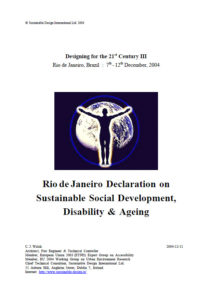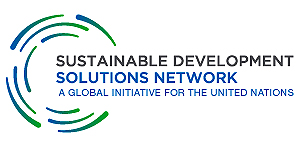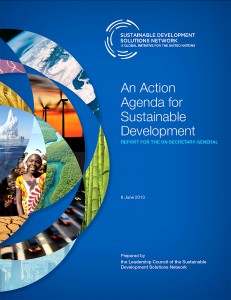2024-09-14: Inclusive Accessibility of the Built Environment – ‘Accessibility for All’ – is a dynamic, continuously evolving concept … the effective implementation of which is essential if we are to realize a Safe, Resilient and Sustainable Built Environment … for ALL, i.e. including everybody, every ‘Person’ in society … particularly ‘Vulnerable People’.
Whether it’s People with Activity Limitations (2001 WHO ICF), or #Refugees, or #Migrants … how does ‘Inclusion’ differ from ‘Integration’ ?

.
Vulnerable People :
Those people – in a community, society or culture – who are most at risk of being physically, psychologically or sociologically wounded, hurt, damaged, injured, or killed … and include, for example, people with disabilities, young children, people with health conditions, frail older people, women in late pregnancy, refugees, migrants, prisoners, the poor, and homeless.
People with Activity Limitations (2001 WHO ICF) :
Those people, of all ages, who are unable to perform, independently and without assistance, basic human activities or tasks – because of a health condition or physical / mental / cognitive / psychological impairment of a permanent or temporary nature.
Accessibility of a Building :
Encompasses the complete cycle of independent use of a building – in a dignified manner and on an equal basis with others – including the approach, entry and usability of the building and its facilities, services and information/communication systems, egress from the building during normal conditions and removal from its vicinity and, most importantly, evacuation during an emergency to a place of safety remote from the building and reached by way of an accessible route … by all of the building’s potential users, with an assurance of their health, safety, welfare and security during the course of those activities.
Successful Accessibility Implementation : [ Principle 2 – 2015 Dublin Declaration on ‘Fire Safety for All’ in Buildings ]
Successful Accessibility Implementation … meaning high quality accessibility performance in the built environment … is reliant upon:
- A robust Legal Base mandating accessibility for all and fire safety for all ;
- Determined Political Will ;
- Sufficient public Financial Resources ;
- A compassionate and understanding Bureaucracy at all levels ;
- Competence … meaning duly educated, trained and experienced in accessibility and fire safety design … spatial planners, architects, structural engineers, fire engineers, quantity surveyors, technical controllers, industrial designers, building managers, and people at all levels in construction organizations ;
- Independent Monitoring of accessibility and fire safety performance ;
- Innovative, well-designed accessibility and fire safety related Products and Systems which can be shown to be ‘fit for their intended use’.
.
Accessible Train Toilet Room in Japan :


.



.


.
Principle 9 – 2004 Rio Declaration on Sustainable Social Development, Disability & Ageing :
Concerted and properly resourced programmes of #Disability and #Age Related education and training should be provided in every U.N. Member State … at all levels … to politicians, educationalists, bureaucrats, administrators, and technical personnel connected, directly or indirectly, with the spatial planning, design, construction/de-construction, operation, management and maintenance of the Human Environment – in order to ensure that the implementation and monitoring of disability and age related Sustainable Social Policies, and the requirements of International Law, are competent and effective.
The #Dignity, #Privacy, #Autonomy and #Independence of every #Person should be respected.
Every U.N. Member State should adopt measures for the production and management of national disability and age related #Statistics – within an agreed and harmonized international framework – which are impartial, reliable, objective, scientifically independent, and accessible to the Public.
For #Survival and #Liberation, the priority targets for a comprehensive range of disability and age related sustainable social policies should be …
– Residential Buildings ;
– Public Transport … including buses, coaches, taxis, trams, trains, ferries, ships and planes ;
– Educational Buildings ;
– Places of Work.
Good #Education, within a context of Lifelong Learning for All, and Good #Employment are important keys to Social Inclusion.
For #Health and #SocialWellbeing, the priority targets for a comprehensive range of disability and age related sustainable social policies should be …
– Health Facilities ;
– Electronic, Information & Communication Technologies (#EICT’s) ;
– Civic Buildings ;
– Existing Buildings & Infrastructure … of Historical, Cultural or Architectural Importance.
In the short term, properly resourced programmes of work should be carried out and monitored in all U.N. Member States – in order to ensure that the Human Environment (social, built, institutional and virtual) is effectively Accessible for All.
.
.
END – But More Examples To Follow !
#Inclusive Accessibility #Accessibility4ALL #VulnerablePeople #PwAL #2001whoICF #PwD #FrailOlderPeople #Buildings #BuiltEnvironment #SocialInclusion #RioDeclaration2004 #FireSafety4ALL #DublinDeclaration2015 #NobodyLeftBehind #EthicalDesign #UNmemberStates #InternationalLaw #Sustainability #SocialWellbeing4ALL




